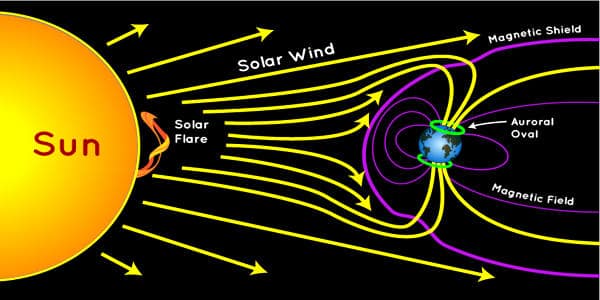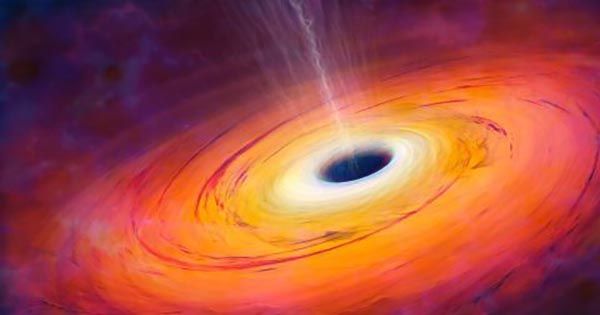The magnetosphere is a system of magnetic fields that surrounds the Earth. This massive, comet-shaped system deflects charged particles from the sun, protecting our planet from harmful particle radiation and preventing solar wind (a stream of charged particles released from the sun’s upper atmosphere) from eroding the atmosphere.
While previous research has gathered substantial evidence of the effects that solar wind can have on the Earth’s magnetosphere, the impact of solar flares (i.e., sudden eruptions of electromagnetic radiation on the sun) is unknown. Solar flares are highly explosive events that can last anywhere from a few minutes to several hours and can be detected with X-rays or optical devices.
Researchers from Shandong University in China and the National Center for Atmospheric Research in the United States recently conducted a study on the effects of solar flares on Earth’s magnetosphere. Their paper, which was published in Nature Physics, provides new valuable insight that may pave the way for a better understanding of geospace dynamics. The upper atmosphere, ionosphere (the ionized part of the atmosphere), and magnetosphere comprise geospace, the portion of outer space closest to Earth.
U.S. researchers have recently carried out a study investigating the effects that solar flares can have on Earth’s magnetosphere.
The Earth’s magnetosphere is the geospace system’s outermost layer, deflecting energetic charged particles from the Sun and solar wind. The solar wind has a significant impact on the Earth’s magnetosphere, but it is unclear whether the same is true for solar flares, which are sudden bursts of electromagnetic radiation from the Sun.
“The magnetosphere is located above the ionosphere and is the fully ionized space region above 1000 km from the ground,” Professor Jing Liu, one of the study’s authors, explained to Phys.org. “The region is surrounded by the solar wind and is affected and controlled by both the earth’s magnetic field and the magnetic field of the solar wind.”
The magnetosphere is commonly referred to as Earth’s protective barrier against the solar wind and other solar particles because it prevents these particles from entering the planet’s other protective layers. Nonetheless, previous research has shown that when the direction of the solar wind is opposite the magnetic field of the magnetosphere, magnetic lines from these two regions can “connect.” This means that some solar wind particles may be directly transmitted to the Earth’s atmosphere.

“We wondered if the flare process, which is characterized by increased radiation, could not only directly affect the earth’s ionosphere but also cause disturbance in the magnetosphere, similar to the solar wind?” Liu stated. “We used a series of observational datasets collected by global satellite navigation systems, the European incoherent scattering radar network, ionospheric satellites, lunar orbiting satellites, and others to answer this question.”
Liu and his colleagues examined data collected by various devices and satellites during a solar flare event on September 6, 2017. They used a recently developed numerical geospace model developed at the National Center for Atmospheric Research to accomplish this. This model, known as the high spatial-temporal resolution magnetosphere ionosphere thermosphere model (LTR), reproduces changes in the magnetosphere-ionosphere coupling system caused by solar flares.
The researchers were able to reveal solar flare effects on magnetospheric dynamics and the electrodynamic coupling between the magnetosphere and the ionosphere using the LTR model and previously collected data. They specifically observed a rapid and significant increase in flare-induced photoionization of the polar ionospheric E-region at altitudes ranging from 90 to 150 km. The phenomenon observed by Liu and his colleagues appeared to have several effects on the geospace region, including lower Joule heating of the Earth’s upper atmosphere, reconfiguration of magnetosphere convection, and changes in auroral precipitation.
“We demonstrated that solar flare effects extend throughout geospace via electrodynamic coupling, rather than being limited to the atmospheric region where radiation energy is absorbed,” Liu explained. “Because other Earth-like planets have similar solar-magnetosphere-ionosphere coupling processes, our research provides new clues for exploring and understanding the effects of solar flares on other planets. In the future, I intend to investigate the effects of flares on planets with similar magnetospheres (such as Jupiter, Venus, and Saturn).”
















